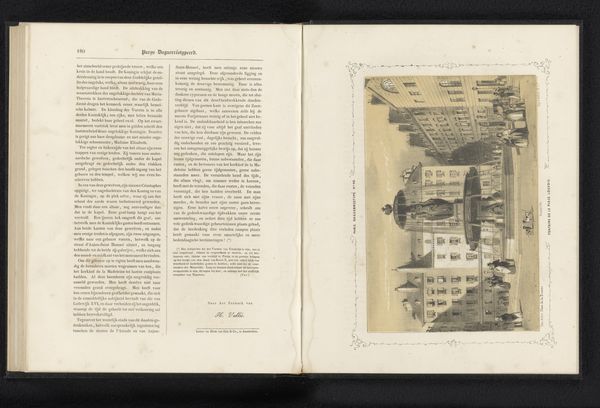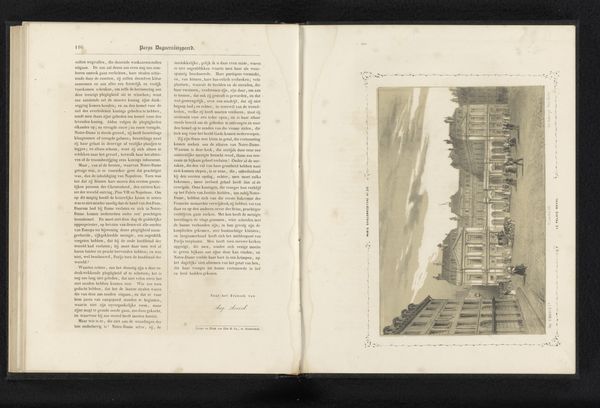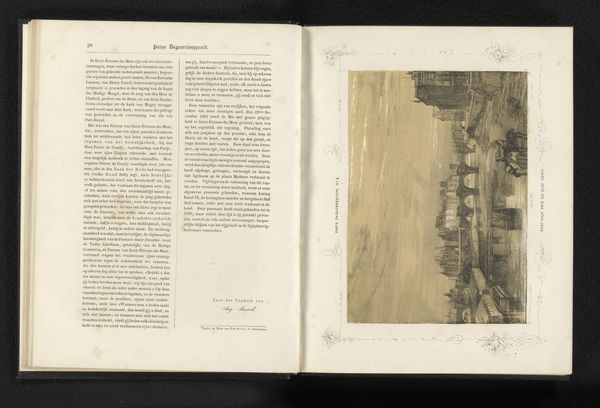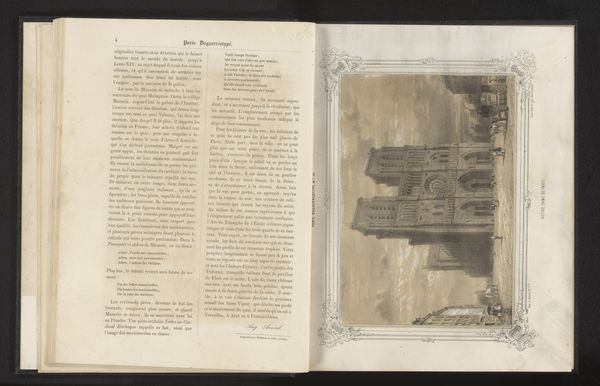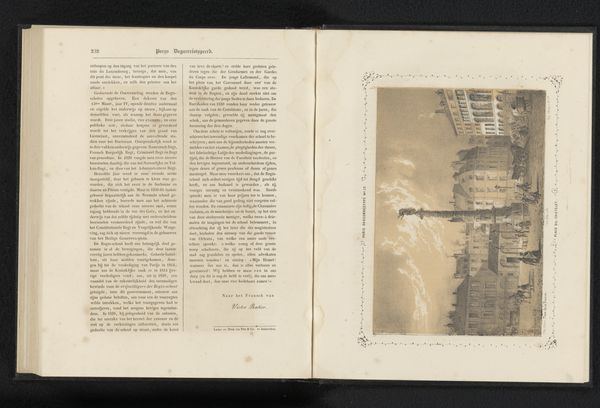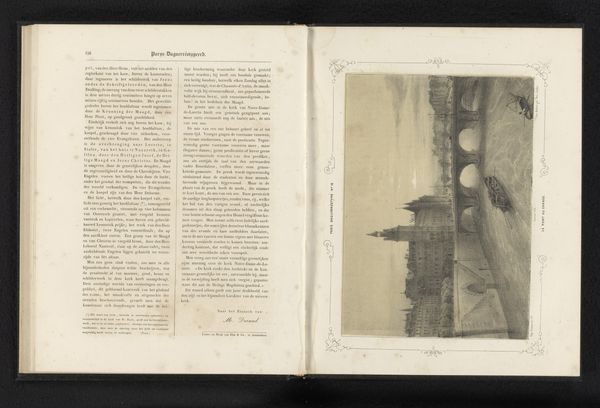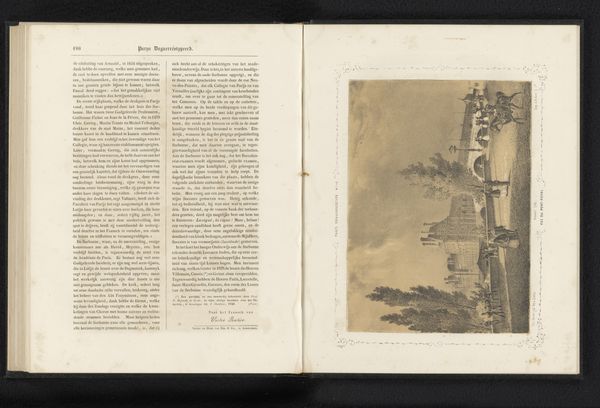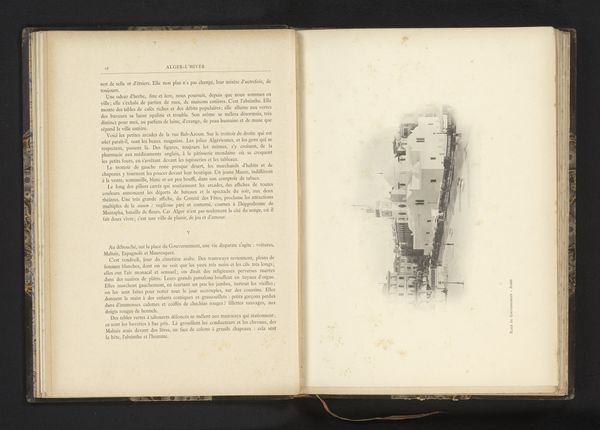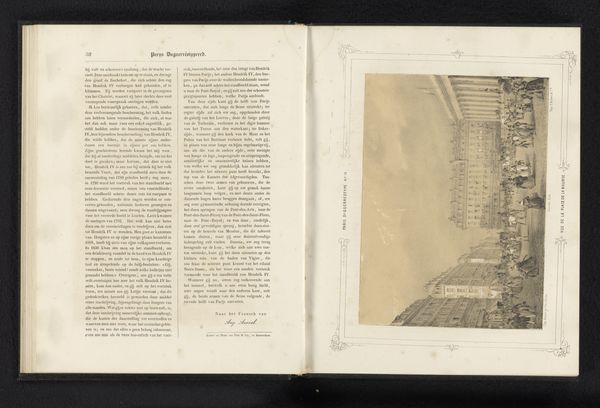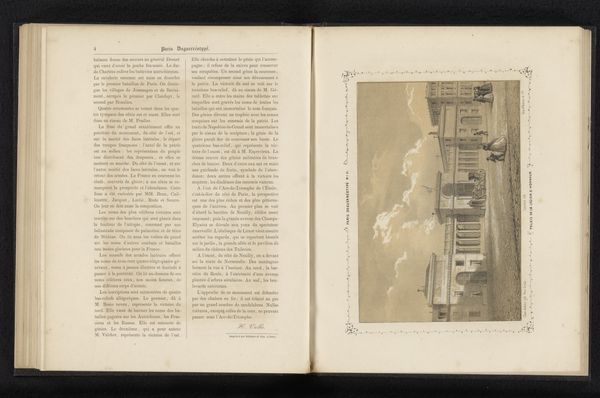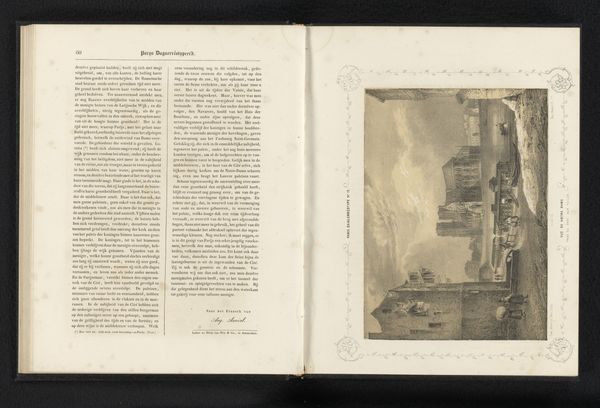
print, etching, architecture
#
sand serif
#
aged paper
#
paper non-digital material
#
paperlike
# print
#
etching
#
thick font
#
publication mockup
#
cityscape
#
letter paper
#
paper medium
#
architecture
#
historical font
#
publication design
Dimensions: height 210 mm, width 260 mm
Copyright: Rijks Museum: Open Domain
Editor: So, here we have Édouard Auguste Nousveaux’s "Chapelle de la Sorbonne in Parijs," an etching from before 1840, part of a book spread. The detail is pretty remarkable, but the sepia tone and aged paper give it a distinctly old-world, almost academic feel. What story do you think this print is trying to tell us? Curator: Well, first off, consider that this is a *print* of a historically significant architectural site reproduced within a publication. What stories might it participate in telling simply by virtue of *being* a print? Think about how this piece is not just depicting architecture, it is participating in making architecture, and its cultural meanings, accessible to a wider audience through the printed page. Who would have had access to this image and how might that demographic inform its meaning? Editor: That's a good point. It's not just *of* the Sorbonne; it's *about* making knowledge and culture available. It feels very much of the Enlightenment ideal. Curator: Exactly! Now, look closer at the etching style and think about what other conversations this visual style may be participating in. Does it call to mind any contemporary artistic or intellectual movements? Editor: The cross-hatching gives it a precise, almost scientific feel, maybe relating to the encyclopedic impulse of the time. But, in making the architecture seem scientific, is there an exclusion of other types of narratives surrounding the building? Curator: A critical insight! By emphasizing its geometric form and scale, perhaps other crucial factors tied to, for instance, the human cost of its creation or how different groups of people experienced the chapel as a space may have been muted. Editor: It really opens up how an image can both reveal and conceal depending on its context and presentation. Curator: Precisely. We must consider not just what we see, but *how* and *why* we see it. The social, historical, and political context of the work is a great way to reframe and rediscover familiar pieces!
Comments
No comments
Be the first to comment and join the conversation on the ultimate creative platform.
